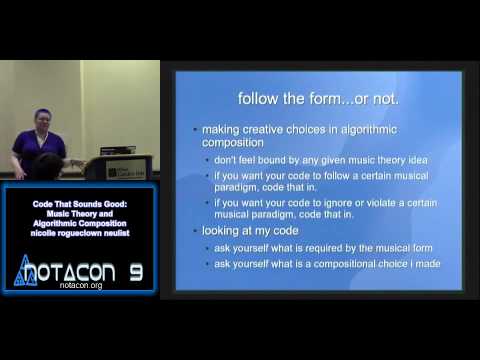Description:
Explore music theory and algorithmic composition in this 53-minute conference talk. Delve into the world of code-generated music, learning about dedicated algorithmic composition environments and libraries for general-purpose languages. Discover the importance of music theory elements such as rhythm, pitch, and key in algorithmic composition. Examine twelve-tone music techniques, including tone row iterations and randomization. Investigate methods for translating data into musical elements and creating unique compositions. Gain insights into the intersection of technology and music, and understand how to leverage coding skills to produce innovative musical pieces.

Code That Sounds Good: Music Theory and Algorithmic Composition - Notacon 9
Add to list
#Art & Design
#Music
#Music Theory
#Music Composition
#Algorithmic Composition
#Visual Arts
#Digital Art
#Generative Art
#Generative Music